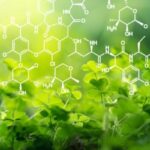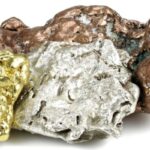We explain what the specific properties of matter are and the main characteristics of each of them with useful examples.

What are the specific or intrinsic properties of matter?
Specific properties are characteristics that only some forms of matter have.
The matter we know has numerous characteristics that allow us to classify it, order it and find out more about its origins. Some of these properties are general, that is, shared with all forms of matter that we know, such as length, weight or volume.
There are also specific properties of matter, that is, properties that only some forms of matter have, and that allow us to differentiate one body from another, one element from another or one substance from another. They are called essential or specific characteristics, since are unique depending on the type of subject studied.
These properties have to do mainly with the nature itself and the physical behavior of matter that is, its recurring reaction to certain stimuli. Matter of the same type, say, the same element, will always behave the same since it always has the same specific properties.
Knowledge of the specific properties of a material is very useful. An example of this is the physical separations of the components of a mixture. Many times to achieve this, methods such as distillation are used, based on the difference between the boiling points of the components of the mixture.
Among the specific properties of matter we can find physical properties and chemical properties.
Physical properties
They define the form and state in which matter can be divided.
- Density The term density comes from the field of physics and chemistry and refers to the relationship that exists between the mass of a substance (or a body) and its volume. This is an intrinsic property of matter, since it does not depend on the amount of substance considered. For example, a kilogram of wood and a kilogram of lead are easily distinguished by their density, which is much higher in the case of lead.
- Melting point The melting point is the temperature at which a solid changes to the liquid state. For this to occur, heat must be provided to the solid until its temperature exceeds the melting point and it passes into the liquid phase. This property is different for each substance. For example, lead melts at 327.3º C, aluminum at 658.7º C and iron at 1530º C.
- Elasticity Elasticity is the ability of matter to recover its original shape, as soon as the application of a force that forced it to change (deforming force) ceases. Some elements have shape memory, that is, they return to their original shape as soon as we stop forcing them to have another one. This is the case with rubber, but not with aluminum (which remains as it is when deformed) or glass (which does not deform, it only breaks).

- Glow Luster is the ability of matter to reflect certain spectrums of light and is typical of metallic or mineral elements. Said shine can be metallic, adamantine, pearly or vitreous, depending on what substance we use as a reference (metal, diamond, mother-of-pearl or glass).
- Hardness Hardness is the natural resistance of certain materials to being scratched or penetrated by another material. For example, materials like diamond, which have high hardness, are more difficult to penetrate than materials like gypsum, which have very low hardness.
- Boiling point The boiling point is the temperature at which the vapor pressure of a liquid becomes equal to the pressure outside the liquid. The liquid-vapor phase transition occurs when the temperature of the liquid exceeds its boiling point. For this, enough heat is supplied to the liquid, so that the kinetic energy of its particles increases greatly (energy they possess due to their movement) and they pass into the vapor phase. For example, the boiling point of water is 100º C and that of mercury is 356.6º C.

- Electrical conductivity. Electrical conductivity is the degree to which a material allows electrical energy to be conducted through it. This property depends on the structure of the material and the temperature. Some materials are better conductors than others, for example metals are good conductors. There are also materials called insulators, which do not conduct electric current. For example: glass, plastic, wood and cardboard.
- Thermal conductivity. Thermal conductivity is the degree to which a material can conduct heat (heat and temperature are different concepts). This property depends on the structure of the material, the temperature, the phase changes of the material (for example, ice-water), among other factors. Most metals are good thermal conductors, and materials such as polymers are poor thermal conductors. Some materials, such as cork, are thermal insulators and do not directly conduct heat.
Chemical properties
They define the reactivity of matter, that is, when a matter becomes a new one.
- Reactivity Reactivity is the ability of a material to react to another material.
- Combustibility Degree or measure to which a substance combusts, it can be said colloquially, that it catches fire. Combustion occurs through an oxidation reaction. Substances with high combustibility are called “fuels.” Well-known fuels in everyday life are gasoline and alcohol.
- Acidity It is the quality that a substance has to behave like an acid. Acids are substances that when dissolved in water, the resulting solution has a pH less than 7 (pure water has a pH=7).
- Alkalinity Capacity of a substance to neutralize an acid. You could say, to counteract its effect.
References
- «Heat and Thermodynamics» 6th Edition. Mark W. Zemansky, Richard H. Dittman.
- “Principles of Chemistry: the paths of discovery” Atkins, Peter; Jones, Loretta.Ed. Pan American Medical. (2006) ISBN 9789500600804.
- Consult: www.elbibliote.com.





